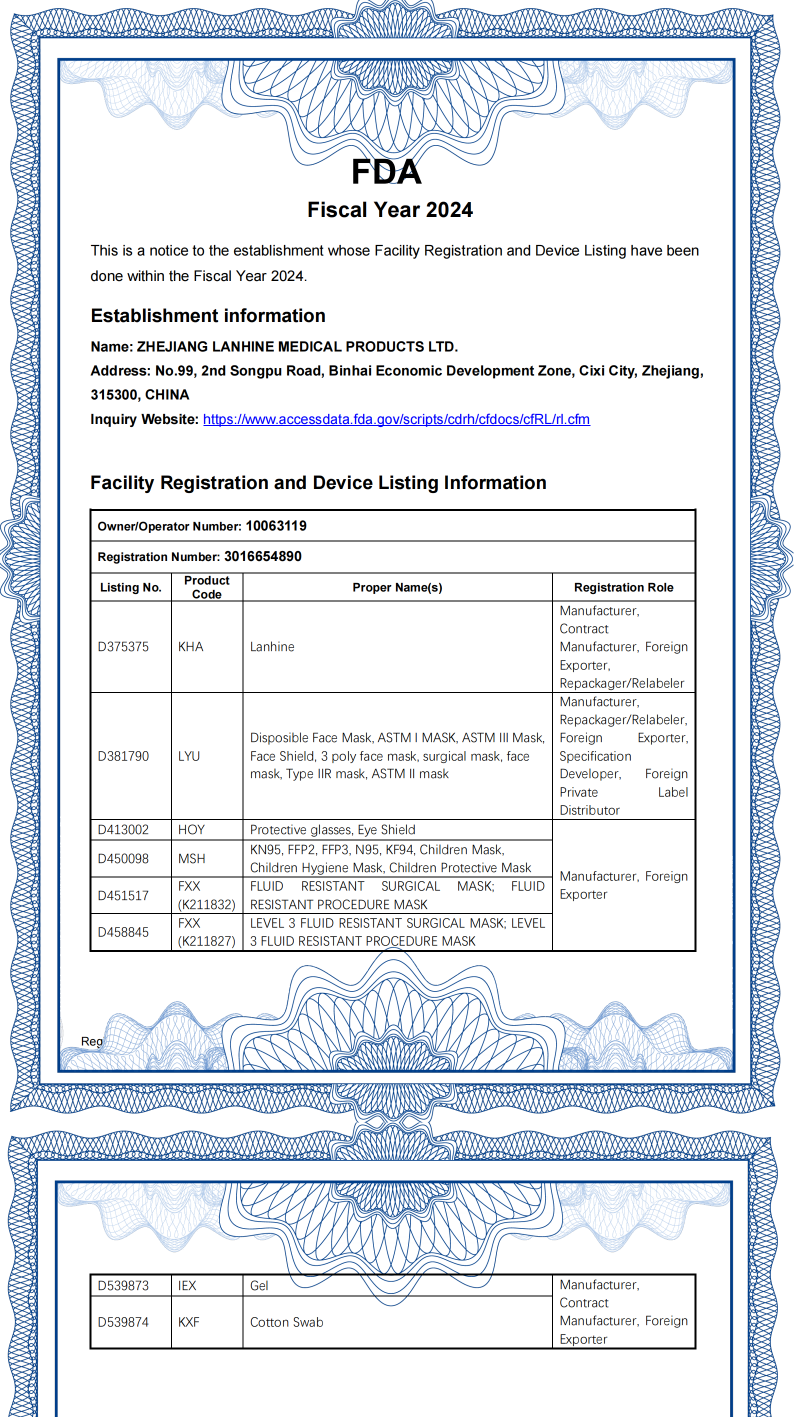In the medical field, FDA (U.S. Food and Drug Administration) and CE (European Conformity) certifications are globally recognized as marks of quality and safety. Products that earn these certifications meet rigorous standards for safety, performance, and quality, ensuring compliance and consumer trust.
Below is an A to Z list of the importance and process of obtaining FDA and CE certifications for medical products:
A – Assurance of Safety
Products with FDA and CE certifications must meet stringent safety standards, ensuring safe use from the start.
B – Bacterial Filtration Efficiency
Products like masks must meet specific bacterial filtration efficiency standards, set by FDA and CE. For example, masks must filter at least 95% of bacteria.
C – Compliance
Having FDA and CE certifications means the products comply with regulatory requirements, essential for access to global markets.
D – Design Validation
The product design must be thoroughly validated to meet performance and safety standards, which is a key focus during the FDA and CE review process.
E – Environmental Responsibility
Biodegradable products must prove they are environmentally safe, which is particularly crucial for CE certification.
F – Functional Testing
During the certification process, products undergo various functional tests to ensure their effectiveness in real-world applications.
G – Global Market Access
FDA and CE certifications allow products to enter multiple international markets, greatly enhancing competitiveness.
H – Health Standards
These certifications guarantee that the products adhere to internationally recognized health and safety standards.
FDA Certification Process:
- Product Classification
Determine the product category, as different categories have varying certification requirements. - Registration Submission
Companies must submit a registration to the FDA outlining the product’s manufacturing and quality control processes. - Review and Testing
The FDA reviews the product and may require additional testing to ensure it meets safety and performance standards. - Approval
Once all requirements are met, the FDA grants approval for the product to be marketed.
CE Certification Process:
- Risk Assessment
Manufacturers must assess the product’s risks to ensure it complies with European health, safety, and environmental regulations. - Technical Documentation
Prepare documentation, including design, testing results, and risk analysis, proving the product meets CE standards. - Conformity Assessment
The product undergoes a conformity assessment to confirm it meets all the requirements of European directives. - CE Marking
After certification, manufacturers can affix the CE mark on the product, allowing it to be sold in European markets.
Z – Zero Compromise on Quality
Products with FDA and CE certifications guarantee uncompromised quality, ensuring safe and effective use throughout the product lifecycle.
By following these steps, Lanhine Medical ensures its products meet global safety standards, earning the trust and recognition needed to succeed in international markets.
Post time: Oct-16-2024
